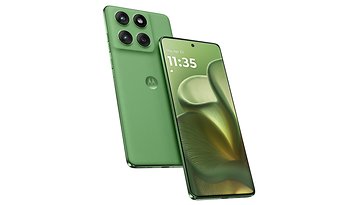Withings BPM Core review: a cardiovascular check-up at home


Connected health is in full swing. After smartwatches landed offering electrocardiogram features, Withings now offers a connected blood pressure monitor. The BPM Core (as they call it) allows you to measure blood pressure, record an electrocardiogram and listen to the sound of your heart. We were able to try it out for about ten days. Here's what we thought.
Good
- 3-in-1 (blood pressure monitor, ECG and stethoscope)
- Easy to use
- Build quality and finish
Bad
- High price
Helping public health
This connected blood pressure monitor is added to the company's long list of devices dedicated to health: there's smartwatches, a thermometer, a sleep tracker, bathroom scales... It all provides access to new health data, previously reserved for hospitals.
This BPM Core is therefore intended for all people wishing to monitor their blood pressure or cardiac activity following a recommendation from their physician. People worried about their health may also be interested in this type of product, but be aware that it does not replace the advice of a health professional. On this point, I must be crystal clear: I will always recommend that you seek the advice of your doctor over a tech gadget.
With this connected monitor, you can detect the first signs of risk of serious conditions , such as atrial fibrillation ( AF) or valvulopathies. Unfortunately, these are pathologies that are often under-diagnosed because they are sometimes asymptomatic and are therefore difficult to detect without very regular medical follow-ups.
If you are interested, the Withings BPM Core is available on the brand's official website and in Apple stores for £229.95 in the UK. The BPM Core is confirmed for the US market, but no official pricing has been announced yet. The device will also be available on Amazon and from regular business partners sometime this summer.
A classic, familair design
This health accessory manufactured by Withings looks like a classic blood pressure cuff that you can see at your doctor's office. The advantage over other electronic blood pressure monitors is that it is wireless, which gives you a lot of freedom of movement to position it.
The Withings BPM Core houses medical sensors discreetly integrated into the device. There are two stainless steel electrodes inside the cuff and one on the tube, as well as a silicone membrane housing the electronic stethoscope.
The grey material of the cuff is soft and comfortable to wear when measuring, and the white tube allows you to display various pieces of information to help you take your measurements and display some results. This white tube also serves as a touch panel and you can swipe to start or stop the device.

To keep the monitor in place, a magnetic strip is present. It's is quite strong and solid but people with small arms will have a little more difficulty "wearing" the BPM Core. The device certainly fits bigger arms better, in my opinion. Fortunately, its small size makes it easy to handle and it is possible to attach the cuff yourself quite easily. Once positioned, you only have to press a button to perform the three different measurements in less than 90 seconds. For the record, Withings recommends that you sit comfortably and wait for five minutes before taking the measurements to be as accurate as possible.

Lots of health data is available
The BPM Core allows you to take three measurements. Please note that you can also program one of the desired measurements instead of taking all three at once.
Blood pressure
Let's start with the most obvious application for this kind of tech product, measuring your blood pressure. The aim is to detect possible hypertension, i.e. abnormally high pressure on the walls of your arteries. One in two hypertensive people do not know that they suffer from this abnormality and measuring their blood pressure regularly helps to avoid the "white coat effect" that sometimes distort the measures taken in the doctor's office.
To take a reading, you simply attach the self-inflating cuff to the upper part of your right arm and click on the single button at the top of the tube. The BPM Core then measures systolic blood pressure, diastolic blood pressure and heart rate. The results are then displayed on the device's LED display. A color code gives you an indication of the 'score': green for normal blood pressure, orange for moderate blood pressure and red for signs of hypertension.
Beware, however, of some results. It is very important to relax before taking the measurement or you risk distorting the result. In case of doubt, you can always consult your doctor.

Electrocardiogram (ECG)
In addition to blood pressure monitoring, the BPM Core also records an electrocardiogram (ECG). ECG recording can detect possible atrial fibrillation, the most common form of arrhythmia that causes one-third of strokes. For those who are unaware of it, atrial fibrillation is a sign of an irregular heartbeat that can lead to serious heart complications. It is estimated that one in five adults in Europe and the United States will develop atrial fibrillation during their lifetime. Unfortunately, it can be asymptomatic and non-permanent and is therefore often under-diagnosed.
To record an ECG, you must keep the cuff on the upper right arm and place your left hand on the steel ring for 30 seconds. The ECG is taken by the BPM Core by a derivation. With this signal, the algorithm analyzes the QRS complex (data from the electrocardiogram that corresponds to the depolarization of the ventricles), and analyses whether or not its results are normal to determine whether the user has atrial fibrillation. The detection of an atrial fibrillation episode is also displayed on the screen.

Stethoscope
The BPM Core also has an electronic stethoscope. It allows to listen to the sounds of the heart valves and thus to detect the main forms of valvulopathies, often asymptomatic as well. This signal is analyzed by an algorithm developed in collaboration with the George Pompidou Hospital to detect the main forms of heart disease, which is recorded when the blood pressure is measured by positioning BPM Core along your chest. You should preferably be shirtless. This is the most complicated measure to obtain.

All results are then automatically synchronized in the Health Mate application, where you can view the history and easily share results with your doctor for a proper follow-up examination.
Again, even though the app offers you some advice and explanations, it cannot replace a doctor. This is why the reading of these results should always be taken with caution. It is also necessary to learn how to handle the device properly and to become familiar with taking measurements before obtaining a series of usable data. The risk of self-misdiagnosis is high with this type of device, so do not necessarily worry or be alarmed if the results appear poor at first.
Six months of battery life
This is one of the strengths of this electronic and wirelessly connected blood pressure monitor. The Withings BPM Core can last up to six months, with one recording per day, on a single charge. To recharge it, simply connect the microUSB plug. Unfortunately, I was unable to test the total battery life during my review process. I was also taking more than one reading per day, naturally, with different participants from our editorial office, to put the device through its paces.
Final verdict
With the BPM Core, Withings shows that it is becoming a major player in connected products for health and that there is life after Nokia. The device makes it easy to take measurements at home that were previously only available in a doctor's office, and is this now the best-connected heart monitor on the market. Its battery life, ease of use and readability via the app are the main strengths of this product, but it should under no circumstances replace your doctor. This is simply an additional tool for keeping an eye on the health of your heart.




















